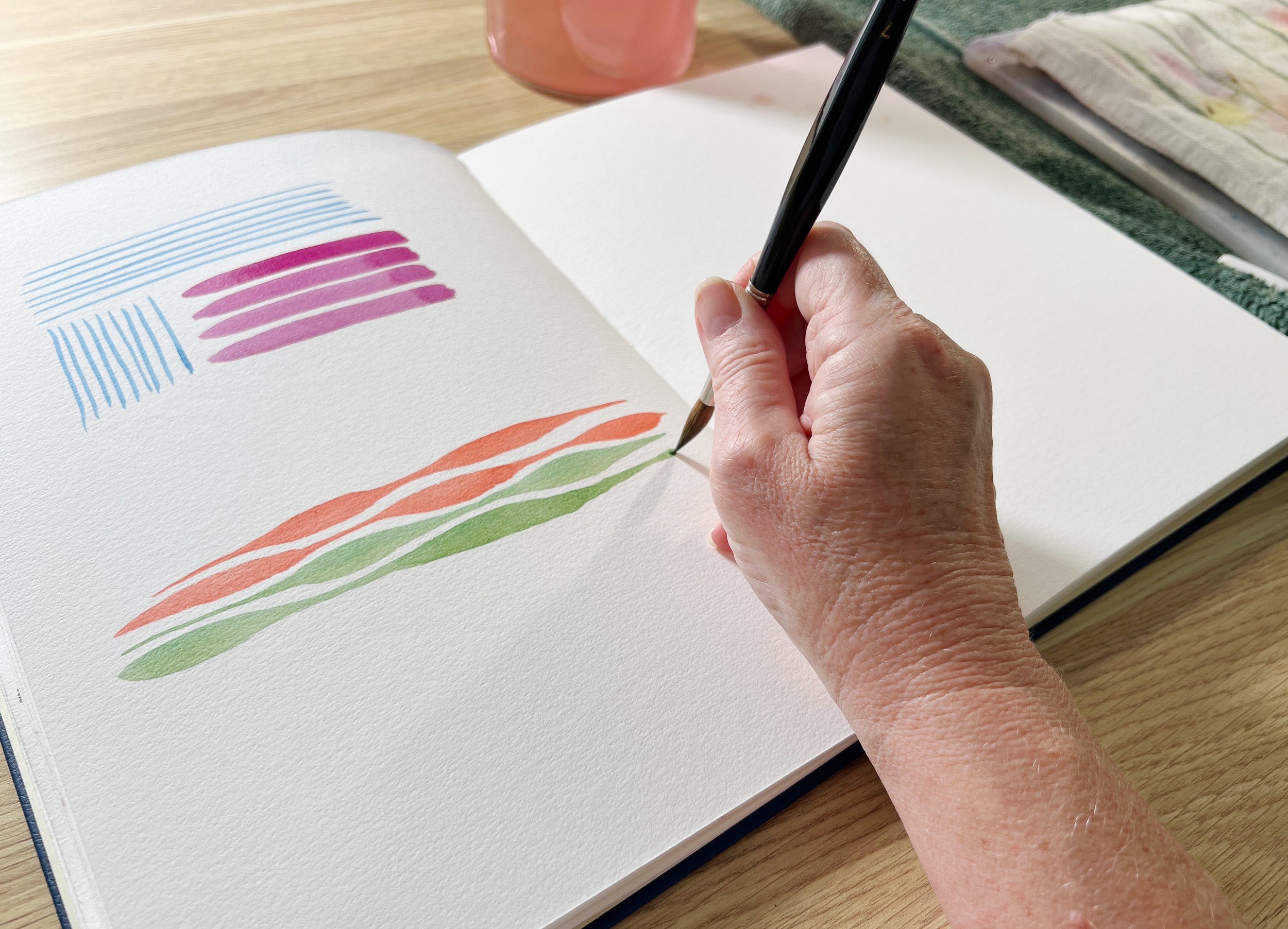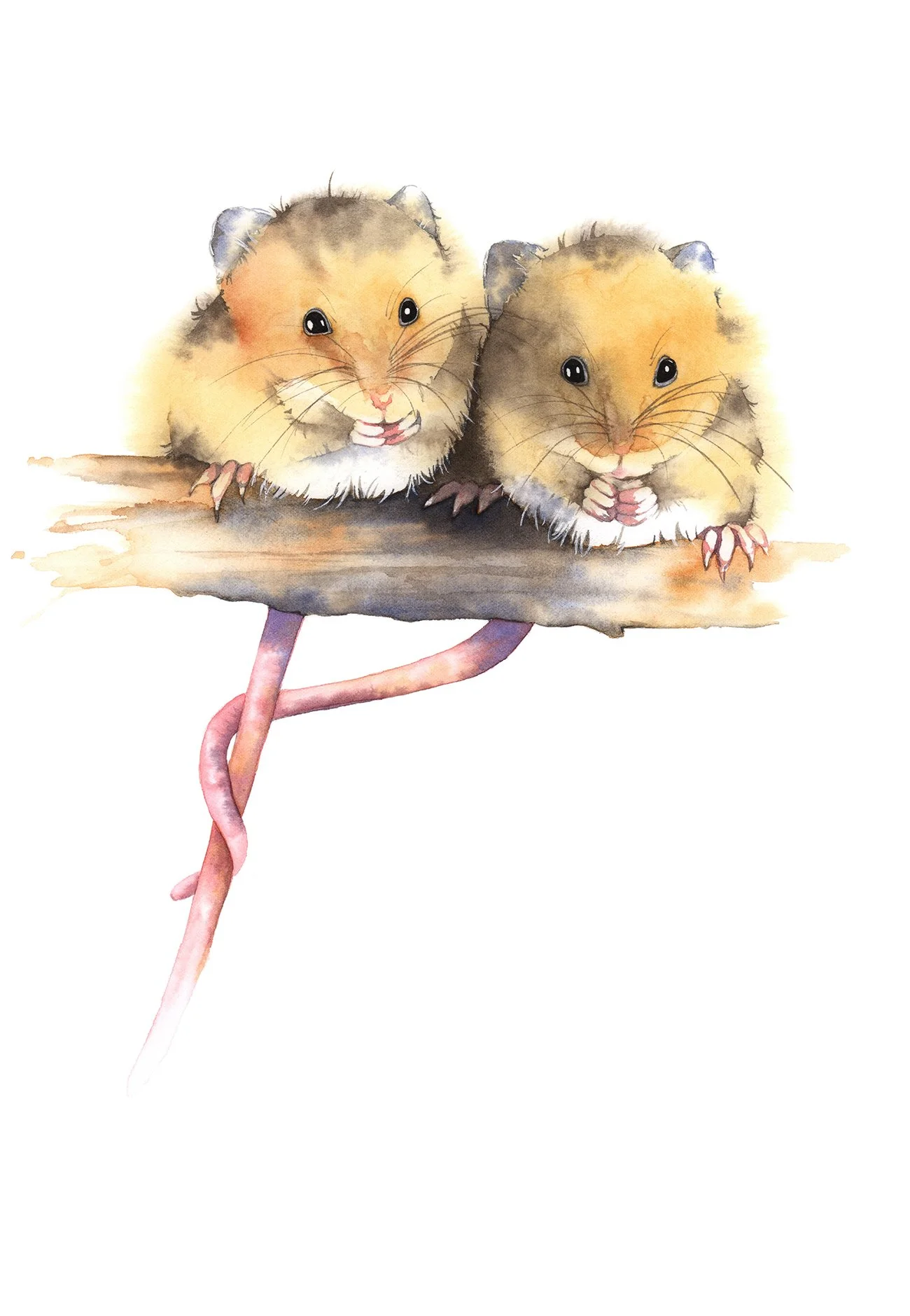The Art of Daily Doodles: Building Muscle Memory in Watercolour Painting
In the realm of watercolour painting, the journey from novice strokes to masterful expressions is not just about the accumulation of techniques but also about the intimate dance between brush, pigment, and paper. Today, I want to share with you a practice that has been instrumental in refining my skills and deepening my connection with watercolour painting: daily doodling.
An easy session of painting simple shapes can be fun and it can help you to loosen up. Like sketching, doodles offer simplicity and doing them can help you to get to know your supplies. It's an easy creative way to relax and paint, while not getting overwhelmed.
Practice brush strokes by painting simple shapes in a journal. Doodle and have fun!
Document your Easy Doodle Journey
Before we dive into the transformative practice of daily watercolour doodling, let's consider a foundational step that can significantly impact your journey: building a journal dedicated to different brush strokes and doodles. This journal serves as a personal library of techniques and expressions, a tactile record of your exploration and growth in watercolour painting. Each page becomes a testament to your evolving relationship with the brush, paint, and paper, cataloging the variety of strokes and doodles that form the building blocks of your artistic vocabulary.
A journal is a great place to practice and store a collection of different brush strokes to help build muscle memory.
This methodical approach not only aids in building muscle memory but also creates a visual dialogue of your progress, making it an invaluable reference and source of inspiration as you continue your path to mastery.
The Power of Repetition
Create abstract paintings like this to improve your brush control and your muscle memory.
The beauty of watercolour lies in its unpredictability and the unique challenges it presents. Each stroke can unfold in unexpected ways, requiring the artist to be both a creator and a conductor. This is where muscle memory comes into play. Like a pianist practicing scales to move with grace and precision across the keys, a watercolourist builds muscle memory through repetition.
Embarking on a daily doodling journey isn’t about producing gallery pieces daily. Making art is not the goal here. Rather, it's about embracing the process, the repetition, and the insights gained with every drop of paint. It's about becoming one with your tools and materials, understanding the nuances of water and pigment, and how they interact on the canvas of your paper.
Simple Starts: Embrace the Basics
Painting a simple blue feather.
Starting simple is the key. Choose subjects that inspire you but won't overwhelm you. Kick off your easy doodle journey with subjects that warm the heart and are easy to paint. Whether it’s the graceful curve of a feather, the gentle sway of leaves, or the abstract beauty of shapes, these doodles are your allies in the quest for mastery.
These aren't just doodles; they're your stepping stones to mastery. As you paint, focus on the weight of the brush in your hand, the amount of water you're using, and how different colours blend and bleed into each other.
Painting a simple butterfly allows you to practice many different techniques- from colour mixing to wash application to brush control.
Keep it simple. Choose subjects that are easy to paint.
Play, Practice, and Paint
Wet your paper and let the paint flow freely and embrace what it gives you.
Embrace a spirit of play in your exploration of watercolour. Watercolour is a medium that rewards experimentation. Mix your colours, play with gradients, and let the water do some of the work. Each step on this path is yours alone, and every little slip is just a disguised lesson.
In blending structured exercises with free-spirited play, you’re not just practicing painting; you’re living it. You learn to observe with more than your eyes, to understand timing, to get intimate with your materials, and to develop a knack for capturing light and colour.
Get creative and allow the paint to flow over the paper.
I also use my journals for simple colour studies for larger paintings.
Once you've done some doodling, try your hand at painting a subject. I use my journals to try out colour combinations and experiment with backgrounds.
Simple thumbnail sketches help to work out compositions and tonal values. All of these simple drawings and paintings not only help me plan but also help me to loosen up.
From Imagination to Paper
Cultivating muscle memory with fun daily doodles also involves translating visions from your mind onto paper. Start with tangible references, simplify them, and then challenge yourself to recreate them from memory. This exercise is less about precision and more about grasping the essence of your subjects.
From simple doodles to simple tree shapes painted from memory.
Loosen Up and Break Free
Splash some paint on the paper and then turn the splash into a simple scene or pattern.
Use your doodles as a liberation tool, breaking away from the pressure of perfection. Splash your paper with joyful colour, then transform those splashes into scenes or patterns. This isn’t just therapeutic; it’s an excellent primer for more focused painting sessions.
Embracing the Community
An integral part of your artistic journey is connecting with others. The watercolour community, both virtual and real, is a wellspring of inspiration, encouragement, and knowledge. Sharing your daily creations can open up avenues for feedback, spark new ideas, and build a sense of camaraderie. Seeing the diverse styles and approaches within the community can inspire you to try new techniques and push your boundaries further.
Although I mainly use my journals for experimentation and practice, some artists create amazing art in their sketchbooks and journals. See Thinking with paper on Instagram for inspiration.
Tracking Your Progress
Incorporating a habit tracker or maintaining a doodle diary, bullet journal or sketchbook is another enriching practice. Documenting your daily creations not only helps in building a consistent practice but also serves as a visual record of your progress. Over time, flipping through this diary will reveal how your skills have evolved, highlighting both your strengths and areas for improvement. It's a personal testament to the journey you've embarked on and a motivational tool to keep pushing forward.
A page from an early sketchbook.
When I look back through an early sketchbook I can easily see how my skills have grown.
The watercolourist’s journey is one of continuous learning and discovery. Through the discipline of daily doodles, you forge the muscle memory needed to navigate the canvas with assurance and creativity. Engaging with the wider community and keeping track of your progress turns this journey from a solitary pursuit into a shared adventure.
Remember, the path to mastery is paved with practice, patience, and perseverance.
Happy doodling!
If you are interested in learning to paint in watercolour, I have over 170 online, voiced over watercolour tutorials for all skill levels.




















